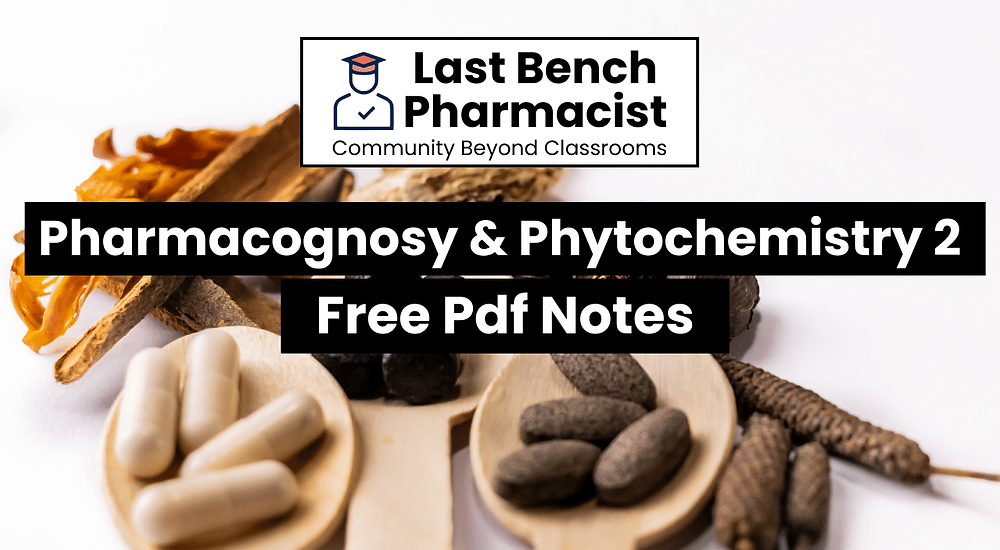



#bpharmnotes #bpharmPharmacognosy2notes #bpharmpdfnotes
Last-benchers, dig out your trowels and dust off your microscopes, because B Pharm Pharmacognosy and Phytochemistry 2 Pdf Notes is about to take you on a wild trip through the plant kingdom! We’re talking about ditching the textbooks and getting your hands dirty with herbs, spices, and all things green. Think of it as a psychedelic safari through the Amazon of your medicine cabinet, where every leaf whispers secrets of healing and every root holds the power to cure. We’ll be learning how to identify medicinal plants like seasoned witch doctors, extract their potent chemicals like mad scientists, and understand how they work in your body like pharmaceutical sorcerers. So grab your lab coat (or at least a tie-dye t-shirt, because things are gonna get groovy), put on your botanist hat (or that straw hat you call lucky), and prepare to rock the phytochemical casbah! Just remember, last-benchers, with great knowledge comes great herbal tea-brewing skills. So let’s conquer this unit, one leaf at a time!
Scope:
The main purpose of subject is to impart the students the knowledge of how the secondary metabolites are produced in the crude drugs, how to isolate and identify and produce them industrially. Also this subject involves the study of producing the plants and phytochemicals through plant tissue culture, drug interactions and basic principles of traditional system of medicine
Objectives: Upon completion of the subject student shall be able to:
To know the modern extraction techniques, characterization and identification of the herbal drugs and phytoconstituents
To understand the preparation and development of herbal formulation.
To understand the herbal drug interactions
To carryout isolation and identification of phytoconstituents
Metabolic pathways in higher plants and their determination
a) Brief study of basic metabolic pathways and formation of different secondary metabolites through these pathways-Shikimic acid pathway, Acetate pathways and Amino acid pathway.
b) Study of utilization of radioactive isotopes in the investigation of Biogenetic studies.
General introduction, composition, chemistry & chemical classes, biosources, therapeutic uses and commercial applications of following secondary metabolites:
Alkaloids: Vinca, Rauwolfia, Belladonna, Opium,
Phenylpropanoids and Flavonoids: Lignans, Tea, Ruta Steroids, Cardiac Glycosides & Triterpenoids: Liquorice, Dioscorea, Digitalis
Volatile oils: Mentha, Clove, Cinnamon, Fennel, Coriander,
Tannins: Catechu, Pterocarpus
Resins: Benzoin, Guggul, Ginger, Asafoetida, Myrrh, Colophony
Glycosides: Senna, Aloes, Bitter Almond
Iridoids, Other terpenoids & Naphthaquinones: Gentian, Artemisia, taxus, carotenoids
Isolation, Identification and Analysis of Phytoconstituents
a) Terpenoids: Menthol, Citral, Artemisin
b) Glycosides: Glycyrhetinic acid & Rutin
c) Alkaloids: Atropine,Quinine,Reserpine,Caffeine
d) Resins: Podophyllotoxin, Curcumin
Industrial production, estimation and utilization of the following phytoconstituents: Forskolin, Sennoside, Artemisinin, Diosgenin, Digoxin, Atropine, Podophyllotoxin, Caffeine, Taxol, Vincristine and Vinblastine
Basics of Phytochemistry Modern methods of extraction, application of latest techniques like Spectroscopy, chromatography and electrophoresis in the isolation, purification and identification of crude drugs.